The 5P Competences project developed an action-based competence framework for sustainable development, tailored to the needs of adult education.
It brings together education and training providers, non-governmental organisations and municipalities from five European countries. These project partners are dedicated to advancing Education for Sustainable Development (ESD) by developing a structured and well-defined competence framework and promoting its integration into adult education for sustainable development.
The competence framework is one of the main tools developed as part of the 5P Competences Project. It serves as a comprehensive guide for anybody concerned with the development of teaching / learning for sustainable development. Its focus is on skills and competences relevant to sustainable development from a lifelong learning perspective.
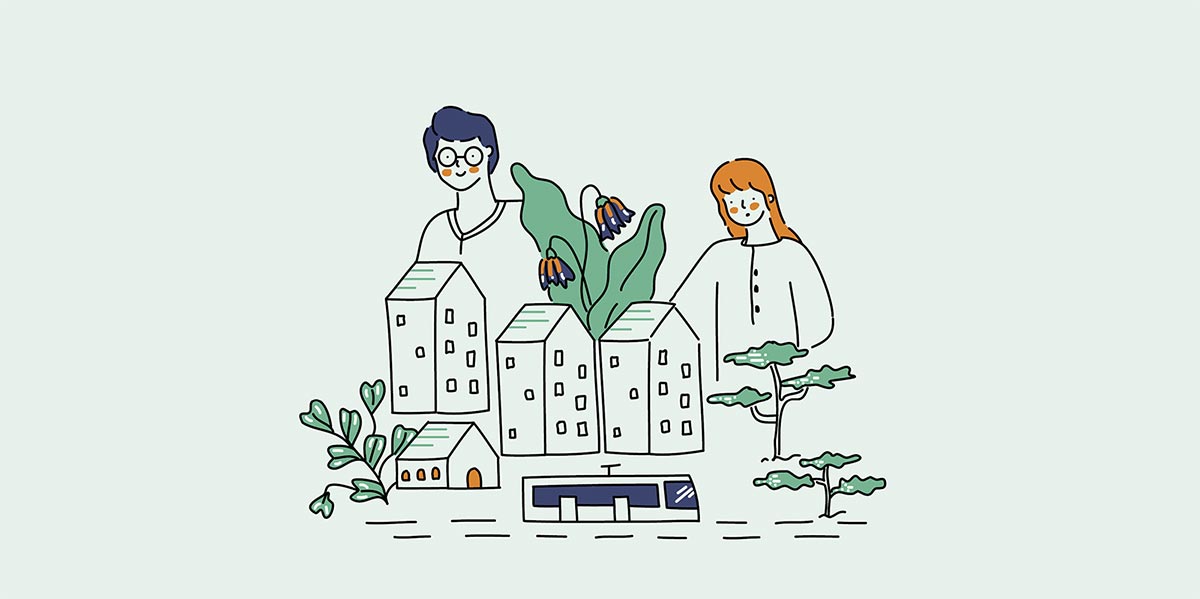
Illustration: Andrea Posada, UN Habitat, 2020
The Conceptual Framework
In the first phase of the project a Conceptual Frame of Reference has been developed, which brings together the ideas and concepts, theoretical elements and research methods adopted in order to develop the 5P framework. At the center lies the concept of "developmental tasks", the tasks and goals that individuals need to achieve over their lifetime. These developmental tasks are seen as important within the context of lifelong learning for sustainable development because they are essential for fostering competences related to sustainability, such as understanding the impact of actions on future generations, promoting fairness, and taking personal responsibility for creating a sustainable world.
The 5P Competences project has identified three main developmental tasks of overall importance for Education for Sustainable Development:
- Existence and Continuance of the World: The first developmental task is aiming at the existence and the continuance of the world. That means the future of one’s own, the future of the society and future of forthcoming generations. The main question that is raised is: on what (material) basis can this future be designed? This means our management of resources. The developmental task is, to learn how to handle our material resources in order to give us as persons, other persons and societies a worthwhile and sustainable future.
- Social Cohesion and Justice: The second developmental task is focussing on the social cohesion of a society, the social contact of persons among themselves and on the results of a comparison between a person and other persons. It is about fairness and surrounding values. The developmental task is to develop social values and a concept of social fairness.
- Self-Efficacy and Active Engagement for Sustainability: The third developmental task is connected to one’s own position in the world. This is not ascribed as it might have been the case in former times, it is earned and it can be assured by one’s own efforts. Therefore it is important to be convinced of one’s own self-efficacy and engage in sustainability action as far as one’s own abilities and interests do allow for that.
With regard to those three tasks the following levels of action can be distinguished:
- whether the development tasks are addressed by sustainability action that takes place in a person's immediate personal environment, i.e. primarily affect the person themselves (micro level),
- whether they are aiming at a person's environment that is in direct, personal contact with him or her, such as the family or immediate circle of friends (meso level),
- whether they address groups or events in a person's immediate environment of which the person is not a member or in which the person is not involved, but which have a significant influence on the person's options for action, such as changes in the possibilities for sustainable consumption or sustainable energy use (exo-level)
- or whether it refers to things that prevail in a society as a whole, such as values, conventions, traditions, regulations, laws or ideologies (macro level).
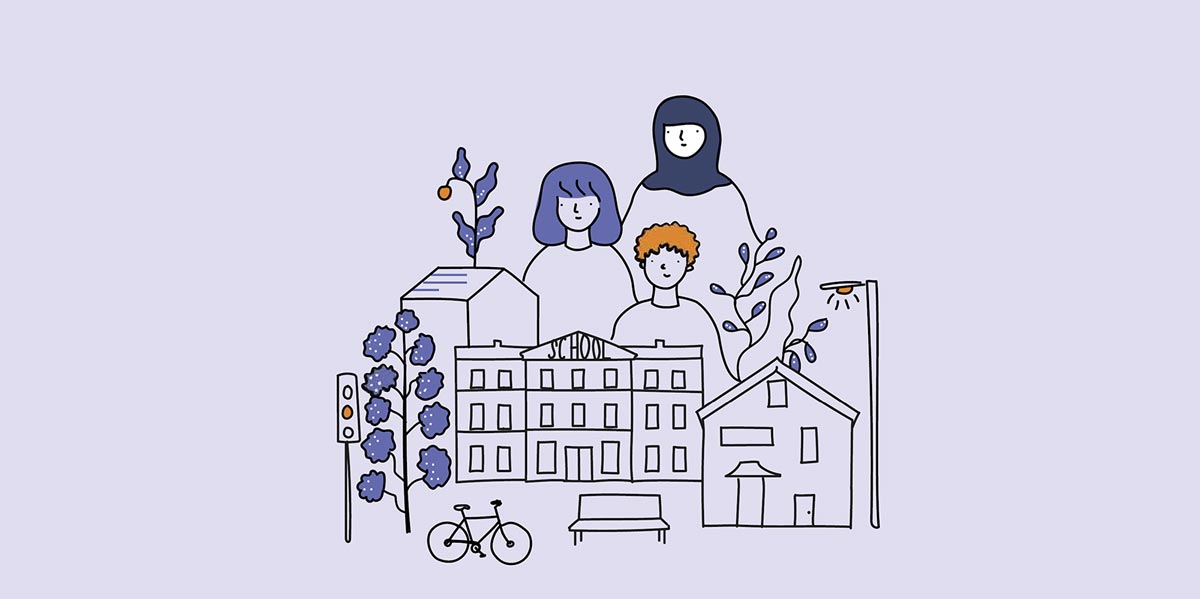
Illustration: Andrea Posada, UN Habitat, 2020
The Competence Model
Next, we looked at different competence models, in order to identify the one most relevant with regard to the nature of the subject.
We finally decided for the model of Heyse/Erpenbeck, which defines competences as “dispositions for self-organisation”. Different to concepts of competences as generalized capacities (OECD, EC) or definitions for cognitive skills (PISA, PIRLS, PIAAC), competences here are grasped as "dispositions for self-organization". In this understanding competences are seen as the ability of a person to successfully master open, incalculable, complex, and dynamic situations in a self-organized way. In other words: competences are dispositions to organize oneself. They are conditions to adapt oneself to concrete situations and changing conditions by successfully adapting one’s strategies of behaviour. This understanding matches very well with the idea of lifelong learning, and informal learning in particular, because its focus is on the fact that individuals are defining the goals of their learning by themselves. Competences are – like informal learning, too – based on self-determination.
The following principles are crucial:
- The development of competences is non-linear
- Competences are reinforcing themselves (because acquiring new competences will lead to new experiences which again initiates the development of new competences)
- Competences are dependent on factors inside the individuals and not from outside (environment)
- Competences are dependent on internalized values
- Competences are dependent on the development of a person and on his or her history.
Identifying Sustainability Competences
The project partners produced a catalogue of competences, which in essence were identified using an inductive approach. In particular, by analyzing local, citizen-led initiatives and projects that address sustainability issues. We coded these project as follows:
- Classification
according to a) the developmental task the project focuses on (material resources, self-efficacy, justice/social fairness) and b) the level of impact (micro-level, meso-level, exo-level, macro-level),
- Goals of the project
For example: avoiding waste, ecological friendly cooking, ecological sensible purchase of food, keeping the city clean etc.
- Teachable competences that can be deduced from the goals
For example: Knowledge about and handling of material resources, knowledge about the attributes of food, knowledge about how to buy ecological friendly food, getting a feeling of togetherness by meeting many like-minded persons, getting a sense of responsibility for the well-being and image of the city by realizing that the group can make a difference.

Illustration: Andrea Posada, UN Habitat, 2020
The Competence Atlas
Given both the competence model and sustainability competences, we defined the 4 main dimensions of the competence framework, which pretty much reflect the categories of the EQF (European Qualification Framework for Lifelong Learning) and DQR (German Qualification Framework for Lifelong Learning), in spite of different terms used. And they are as well matching with the developmental tasks explained before.
- Personal competences (P) are dispositions within the individual leading to self-organized action. They encompass the ability to assess oneself, to reflect on oneself as a person and to develop own individual values, motivation and standpoints. This is as well affecting gifts, motivation, creativity and learning.
- Social and communicative competences (S) are dispositions to collaborate with others in a self-organized, cooperative and communicative was. The behaviour of a person is orientated on groups and relationships to others in order to create shared action-plans to develop joined tasks and objectives. Social and communicative competences are important to put coordinated actions on a stable ground.
- Domain and method related competences (F): These dispositions are the conditions for a self-organized, accurate, objective and domain-based problem solving. This is depending on professional and methodological knowledge and on the capability to develop this knowledge further in a creative way.
- Activation and action competences (A) are dispositions to put the other competences into action. This means to integrate the personal, social-communicative and domain related competences of a person into his or her personal motives and endurance.
Based on the work of Heyse and Erpenbeck, we developed a "Competence Atlas" which suggests 8 partial competences in each dimension, making a total of of 64 partical competences.
What makes this matrix relevant for this project is – besides the reasons mentioned above – the fact that they can be adapted to different sustainability topics. The following graphic shows the personal competences, social-communicative competences, domain- and method-related competences as well as action competences of the competence-atlas, adapted to the characteristics of both, informal learning and education for sustainable development:
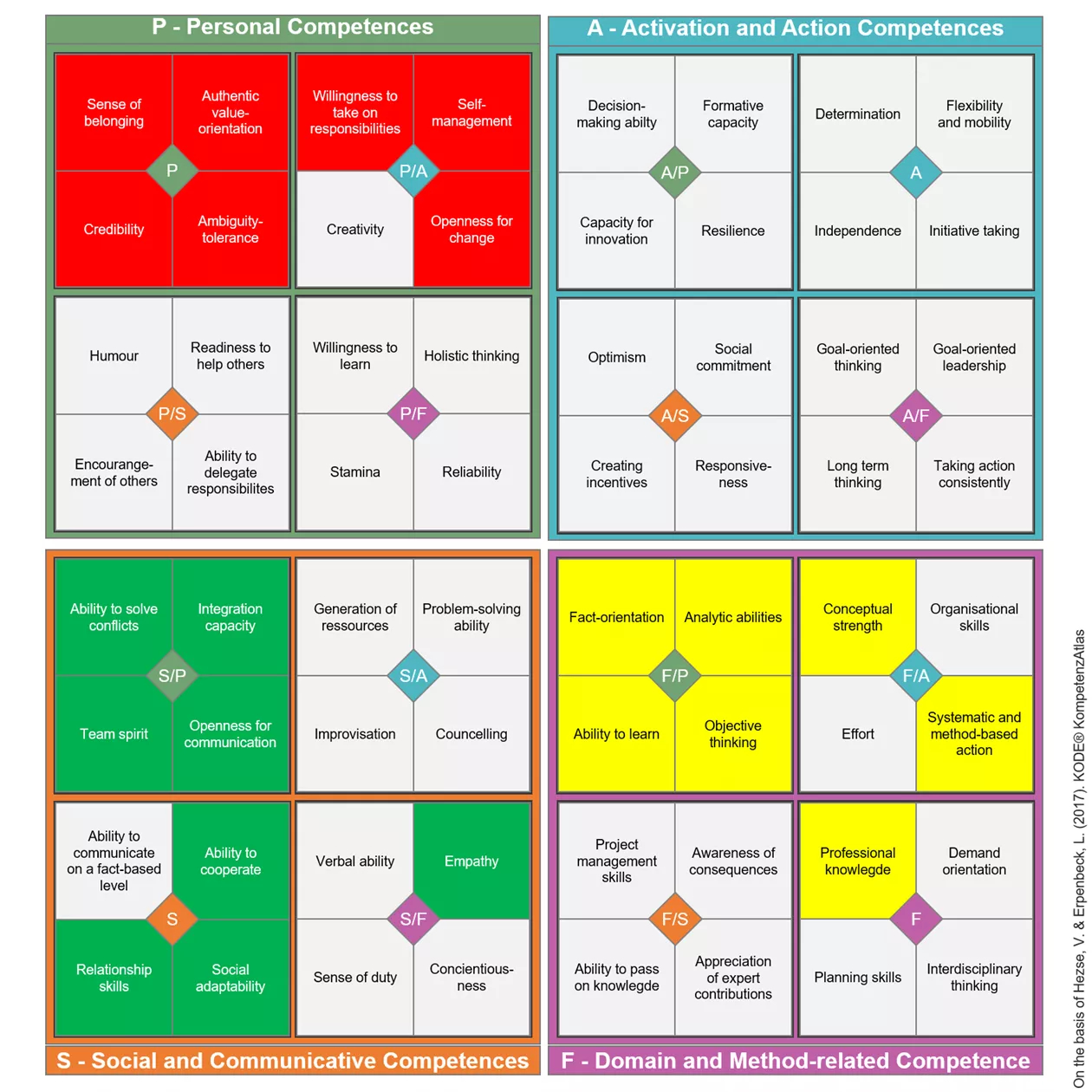
Yellow = Developmental Task: Material Resources
Green = Developmental Task: Social Cohesion, Justice and Social Fairness
Red = Developmental Task: Self Efficacy
Developing learning for sustainable development with the aid of the 5P competence framework
Complementary to the framework the partners developed an online learning programme which consists of 7 general modules: introduction to the 5P competence approach, presentation of the competence framework and explanations on how to put it into practice. This is complemented by 5 modules which along with concrete examples demonstrate, how the competence framework can be used for developing adult education for sustainability:
- environment protection and climate change
- inclusion and equity in education
- sustainable management
- migration and refugees
- democracy and participation
The following example for the practical application of the 5P Competence Framework relates to the topic of environmental protection and climate change. It explains through the example of a concrete civic initiative to recover the autochthonous forests of the Catalan coastal system as an environmental recovery strategy to mitigate the impact of the climate change and biodiversity loss. The aim is to explain how to use the competence framework to improve informal and non-formal adult learning processes in a course or other learning settings.
Mapping the competences
We recommend to start with a brainstorming session on the knowledge, skills and attitudes to be learned in the course or learning event such as
- Understanding and critically analysing the environmental, economic and social impacts of human activities on the forests at local, national and global levels (knowledge).
- Knowledge of sustainable forest conservation strategies, techniques and procedures at local, national and global level.
- Acquire the skills to apply sustainable strategies, techniques and procedures in daily life to protect the local forest.
- The ability to deal with ethical-environmental dilemmas and to reason and justify possible solutions.
After the brainstorming session, we recommend to look at the 5P-competence framework to identify the competences that best fit the course or other learning setting.
| Material Resources | Yes | Social Values | Yes | Self-Efficacy | Yes |
|---|---|---|---|---|---|
|
Competences to handle items |
✔️ |
Sense of belonging to the |
✔️ |
Evaluation of one’s own |
|
|
Competences for recycling,
|
✔️ |
Conscientiousness |
✔️ |
Empowerment |
✔️ |
|
Competences for
|
Inclusion and Participation |
Perseverance |
✔️ | ||
|
Competences necessary
|
✔️ |
Social adaptability |
Cooperation competences |
||
|
Competences to integrate
|
Organizational competences |
||||
|
Competence to integrate ESD |
In the table of the 5P competences, we identify 3 competences in the dimension of material resources:
- Competences to handle items of every-day use in a sustainable way
- Competences for recycling, zero waste, and emission management
- Competences necessary to understand the scientific background of ecology
In the dimension of social values, we have 2 hits:
- Sense of belonging to the world (Sustainability values)
- Conscientiousness (Awareness)
Last but not least, we have two competences in the dimension of self-efficacy:
- Empowerment
- Perseverance
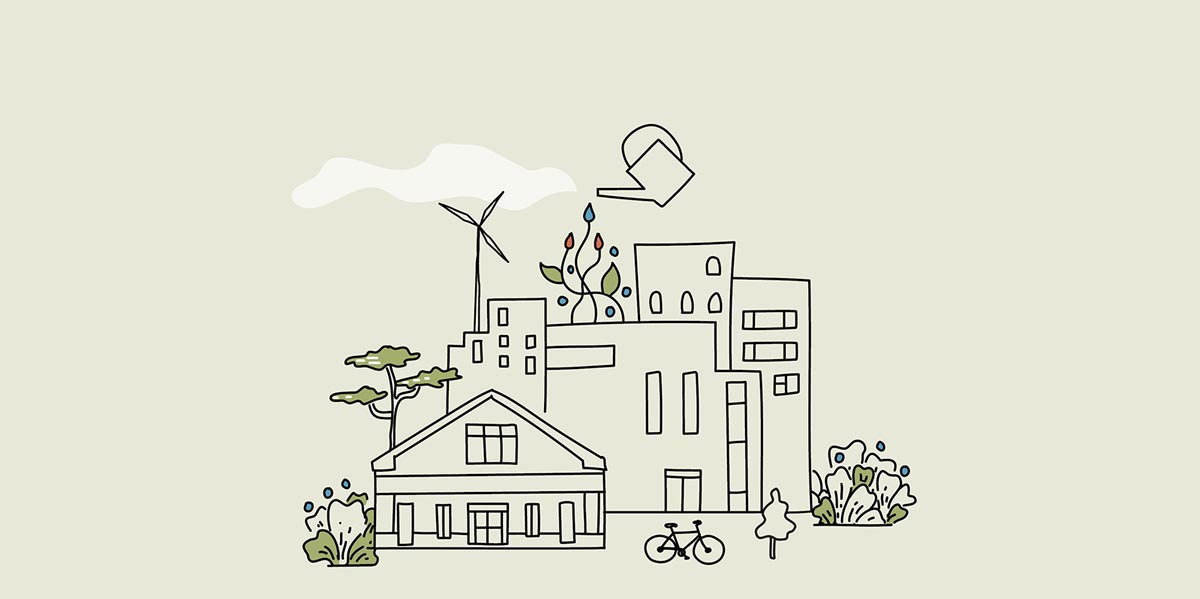
Illustration: Andrea Posada, UN Habitat, 2020
Defining the Learning Outcomes
Having provisionally selected the competences that fit well with the course, the next step will be to have a closer look at each of the selected singular competences in order to concretise the learning outcomes.
The first competence is: Competences to handle items of every-day use in a sustainable way. For its adaptation to recovery of the native forest we propose:
| Competences to handle items of every-day use in a sustainable way |
|
Descriptor To manage items that we are using in our every-day-life (such as clothes, paper, water) in a sustainable way means that we take care of their life cycle. This implies being informed about where they are coming from, how they were produced and how they are distributed, or how they can be acquired. As well as treating things carefully, using them in a sustainable way, avoiding waste, and disposing them in a way that fits into a natural life cycle. |
|
Knowledge Having the necessary information about local and global items and objects used in daily life, their origin, the ecological footprint of their production and transport/distribution. Knowing about options of how to acquire these things and how to use them while considering the lifecycle of the products in use. Knowledge of how to capitalize on local products to avoid the excessive costs of export products.
|
|
Skills Being able to use every-day-items properly, parsimoniously, and in an ecological way. Having the necessary skills to consider eco-logical aspects in using things and to put them into an ecological life cycle.
|
|
Attitude Being committed to respecting and incorporating ecological aspects in every-day-life and in objects of daily use.
|
The second competence is: Competences for recycling, zero waste, and emission management. For Its adaptation to recovery of native forests, the following elements of knowledge, skill and attitudes can be used:
|
Competences for recycling, zero waste, and emission management |
|
Descriptor These competences contain the knowledge necessary for participation in product cycles (e.g. recycling), avoiding waste and an ecological friendly way of handling emissions. The competences are especially related to the motivation for own action and for improving both private and public behaviour. |
|
Knowledge Knowledge about the properties of things used in everyday life and options for their ecological use, such as technical procedures of parsimonious heating and necessary tools for this, the ecological footprint of things, procedures of recycling things of daily use or (e.g. buying second hand products), or how to dispose things correct and avoid waste.
|
|
Skills Being able to use every-day-items properly, parsimoniously, and in an ecological way. Having the necessary skills to consider ecological aspects in using things and to put them into an ecological life cycle.
|
|
Attitude Being committed to respecting and incorporating ecological aspects in every-day-life and in objects of daily use.
|
The last competence in the dimension of material resources is: Competences necessary to understand the scientific background of ecology. For its concretisation in learning outcomes we propose:
|
Competences necessary to understand the scientific background of ecology |
|
Descriptor To keep up with the current knowledge and techniques supporting sustainable living it is important to address scientific discovery. This is also important to under-stand interrelations between different aspects of living and of regional differences to come to an own opinion. |
|
Knowledge Understanding of scientific concepts and terms concerning different aspects of living, their intercorrelation and relevant regional differences; Knowing where and how to access scientific information to solve concrete problems and knowing how to take this as a basis for one’s own argumentation.
|
|
Skills Persons are able to read or to listen to scientific publications and can integrate this knowledge into their own concepts. They can build a critical view on scientific discovery (e.g. being able to distinguish between scientific and non-scientific knowledge) and can draw practical conclusions, own argumentation, and scientifically informed actions from it
|
|
Attitudes Persons are interested in scientific discovery, want to stay in-formed thoroughly on specific topics, and take part in discussions on specific topics.
|
The first competence in the dimension of social values is: Sense of belonging to the world (Sustainability values). Its adaptation to recovering of native forest led us to a definition as follows:
| Sense of belonging to the world (Sustainability values) |
|
Descriptor Perceiving and understanding oneself as part of the world and the critical reflection on this. Being part of a group is central for the development of values and to act within one’s community. This includes the reflection of one’s own role as an individual as part of different communities and society as a whole, as well as an understanding of how relationships and groups form and develop. The development of values also includes learning about other persons values, to understand, discuss, and respect these in order to create shared values and applying them as basis for shared sustainable action and visions for a more sustainable future. |
|
Knowledge These competences contain knowledge about values and their relevance to persons thinking and behaviour as well as to group dynamics. They also include knowledge about how individual and societal values interrelate with sustainable behaviour and why such behaviour is relevant for the world (e.g. through how climate change impacts different social groups).
|
|
Skills People can communicate with others, build and maintain relationships, develop their own personality as individual and as part of a group and the world. They can reflect on and show empathy for own and other’s values as well as debate diverging principles.
|
|
Attitudes People are aware of their contributions to a group and their potential impact to their community, they are open for being an active part of a group and take on responsibilities. They are curious and willed to listen to perspectives and ideas of others, including those of minorities. They are aware of the concept of sustainable goals (SDGs) and willing to participate in resolving unsustainable problems like
|
The second and last competence in the dimension of social values is: Conscientiousness (Awareness). Its adaptation to recovery of native forest may lead to a definition as follows:
|
Conscientiousness (Awareness) |
|
Descriptor Developing a more sustainable way of living requires awareness of current changes in the world that call for more sustainability. Understanding the influence an individual person can have on their community, local politics and direct surroundings can be a key towards implementing sustainable change in one’s own everyday life and to start learning necessary skills. This includes the ability to understanding one’s responsibility for own actions and the state of one’s environment and the ability to act accordingly. These competences also include an openness for new information and for learning especially about the interconnected systems in one’s direct surrounding and to keep up with new issues and ideas. |
|
Knowledge These competences contain knowledge about how people, their behaviours and their local or global environment are interconnected. They also include an understanding of one’s own perception and how this (in-)forms one’s opinion and how to search for and find information.
|
|
Skills These competences contain skills concerning self-awareness, self-reflection, and self-efficacy. This includes the critical reflection of own perceptions and concepts, the search for and differentiation of trustworthy from unreliable information and the critical integration of new information into one’s own concepts.
|
|
Attitudes Persons are open for taking responsibility for challenging tasks, are willed to face inconvenient truths and to both learning or teaching new things. The pay attention to their environment and other people and seek exchange and new information.
|
The first competence in the dimension of self-efficacy is: Empowerment. Its adaptation to recovering of native forest can be defined as follows:
|
Empowerment |
|
Descriptor Empowerment means to encourage people to take charge of their lives and to be active citizens. With regards to sustainable action this can happen through the integration of Sustainable Development Goals into the personal social network (at work, personal networks, local community among others). It is important to show enthusiasm and commitment to one’s values and by this one can in-spire others to get engaged for sustainable development as well. |
|
Knowledge Knowledge about own resources and about how oneself and other people can be motivated for taking up actions and how to sustain both motivation and action. Knowledge about Social Development Goals and possibilities of their implementation into daily live. Knowledge about how knowledge can be shared.
|
|
Skills If someone is an empowering person, they can excite others to engage in a topic, to change their behaviour, and/or to participate in movements concerning sustainable development. It includes reflecting on and increasing self-determination.
|
|
Attitudes An empowering person must have self-determination, social interest and willingness for engagement with relevant topics and self-development. This can also include persuasive skills and empathy.
|
The last competence in the dimension of self-efficacy is: Perseverance. Its adaptation to recovering of native forest conduce to define as follows:
|
Perseverance |
|
Descriptor Perseverance can be understood as an important element of self-management. It is a competence to motivate oneself to continue with one’s activities and to take over responsibility for the actions undertaken by oneself and from others. |
|
Knowledge Understanding on psychological barriers of perseverance and how to address them.
|
|
Skills Patience and endurance. Leadership. Competence of being active and holding on in doing one’s own things. Taking over responsibility. Carry others along and working together over a long time.
|
|
Attitudes People are not only used to take strong efforts to reach their goals, but they also continue their efforts after having failed. They are strongly convinced that patience and endurance are important to reach their goals and that they will be successful.
|
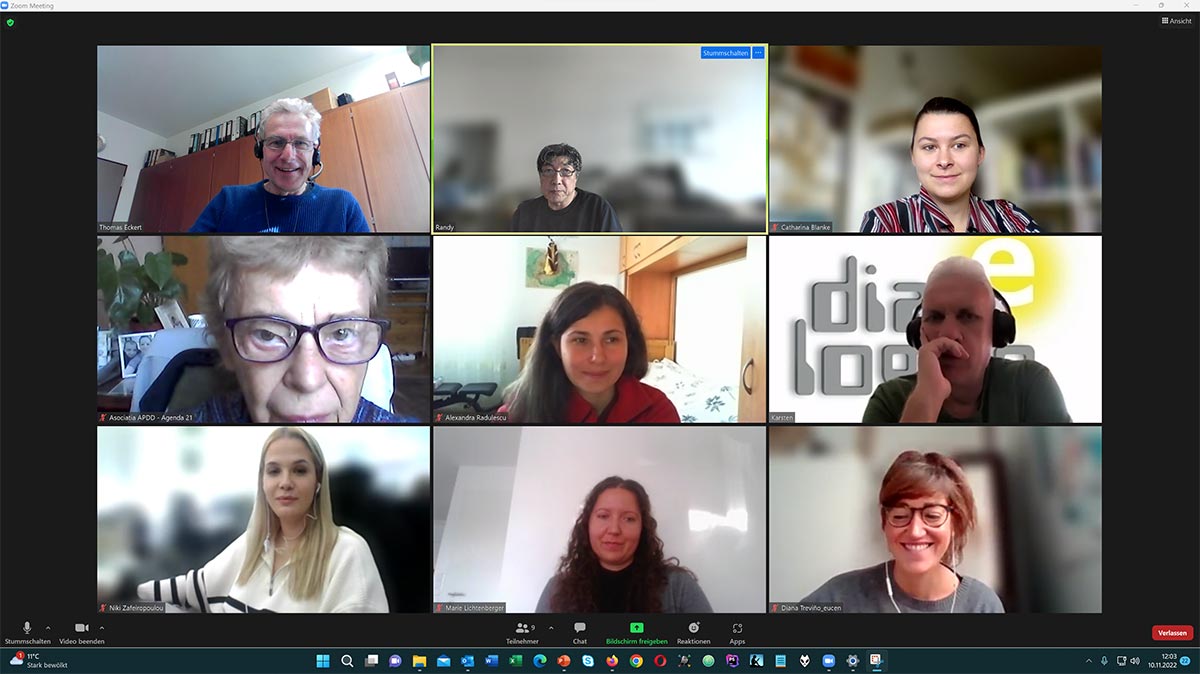
Further resources
Learn more about the theoretical and pedagogical foundations of the 5P competence framework, as well as possible applications in the context of developing education for sustainable development on the 5P course platform. The platform in addition provides a selection of case studies, demonstrating how to put the competence framework into practice and recommendations for practice and good practice.
The course is available in English, German, Greek, Spanish and Romanian.
All documents and materials cited in this blog post are available as open educational resources from the 5P Homepage. The homepage in addition offers a free copy of the digital version of the framework, for use in Moodle and other online learning platforms.
Last but not least, we invite you to join our Community of Practice:
- EPALE group: https://epale.ec.europa.eu/en/private/sustainability-skills-adult-education
- DISCUSS group: DISCUSS - The Community of Practice in Lifelong Learning